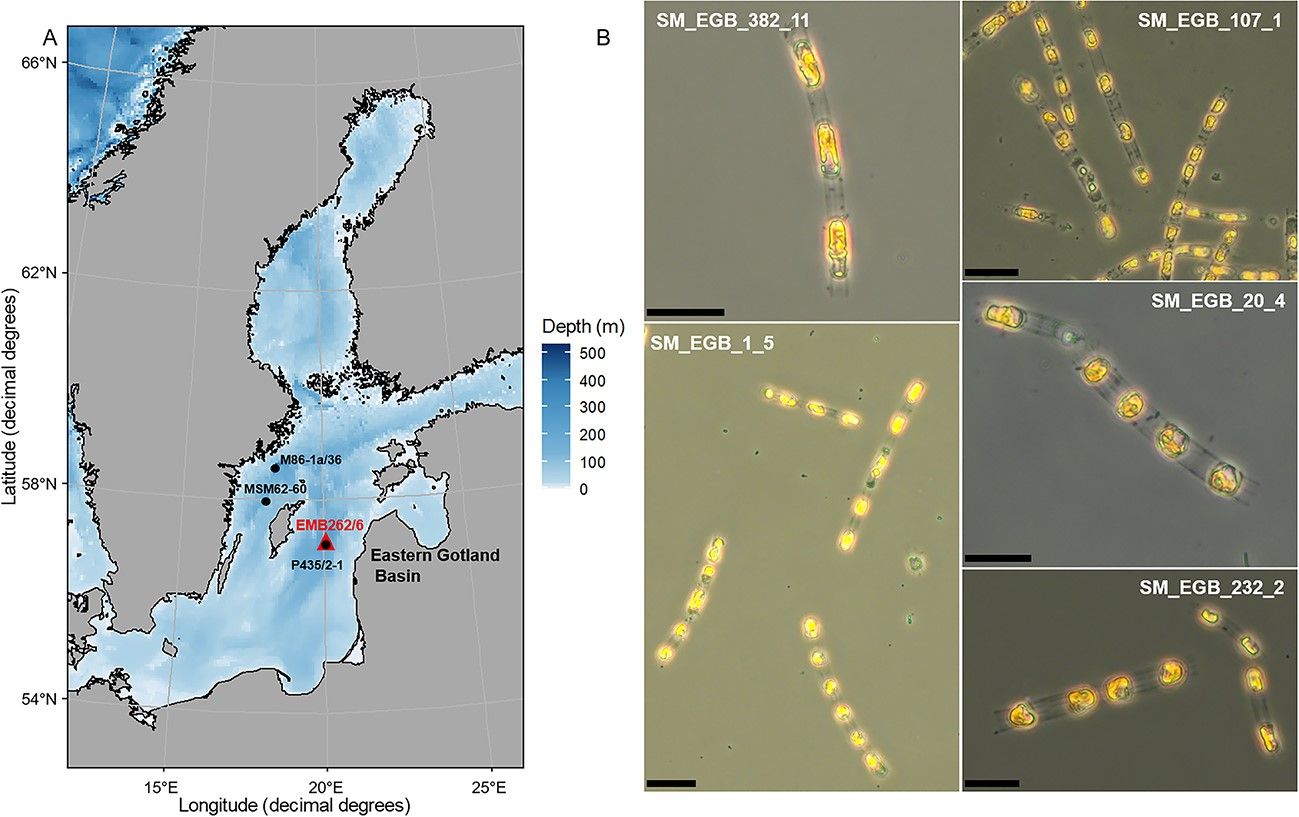Scientists awaken organism dormant for 7000 years 🧬
Published by Cédric,
Article author: Cédric DEPOND
Source: The ISME Journal
Other Languages: FR, DE, ES, PT
Article author: Cédric DEPOND
Source: The ISME Journal
Other Languages: FR, DE, ES, PT
Follow us on Google News (click on ☆)
This discovery, published in The ISME Journal, was made by an international team led by the Leibniz Institute. Scientists extracted sediment cores from the depths of the Baltic Sea, where microscopic algae had been preserved in a state of dormancy, deprived of light and oxygen for nearly 7,000 years.

A - Map of the Baltic Sea showing the sediment sampling site in the Eastern Gotland Basin (triangle) at a depth of 240 m (787 feet).
B - Images of different strains of S. marinoi stained with Lugol, revived after dormancy periods ranging from 3 to 6871 years. Scale = 20 µm.
A dive into marine history
Dormant organisms, like these microalgae, can survive extreme conditions by slowing their metabolism. Buried in sediments, they form natural archives of past ecosystems. Researchers isolated strains of Skeletonema marinoi, a common diatom, from different geological layers.
Genetic analysis revealed variations between ancient and modern populations, demonstrating gradual adaptation. The revived algae regained normal photosynthetic activity, with performance comparable to their present-day descendants.
This method, dubbed "resurrection ecology," allows direct study of past organisms rather than relying solely on fossils. Marine sediments act as a time capsule, preserving information about ancient environmental conditions.
A tool to understand the future
The reactivated algae, aged up to 6,871 years, showed stable growth and intact oxygen production. These results suggest remarkable resilience of biological mechanisms despite millennia of inactivity. Researchers now plan experiments to test their response to different climate scenarios.
By comparing ancient and modern strains, scientists hope to better understand the impacts of past changes on phytoplankton. This approach could inform predictions about the evolution of marine ecosystems in the face of current warming.
The study also demonstrates the usefulness of sediments for tracing the genetic history of species. Next steps will include in-depth analysis of adaptations that occurred over millennia.
Going further: What is dormancy in microalgae?
Dormancy is a widespread survival mechanism in the living world, allowing organisms to endure unfavorable periods. In microalgae like Skeletonema marinoi, this state is characterized by the formation of specialized cells with thick walls and energy reserves. These "dormant stages" can withstand the absence of light, oxygen, or extreme temperatures.
When environmental conditions become favorable again, these cells trigger a metabolic "awakening." This process involves the gradual reactivation of cellular functions, including photosynthesis and division. Unlike a simple pause, dormancy requires complex physiological adaptations, such as the production of protective proteins.
Scientists distinguish this strategy from sporulation or hibernation. In microalgae, it is often linked to seasonal cycles: in winter, cells sink into sediments to escape freezing, then resurface in spring. However, some strains can remain inactive for millennia, as revealed by the Baltic Sea study.
This ability raises questions about the limits of life. How do these organisms maintain cellular integrity for so long? Do their repair mechanisms remain active? These are some of the avenues explored by "resurrection ecology," which uses these microalgae as models to study extreme longevity.